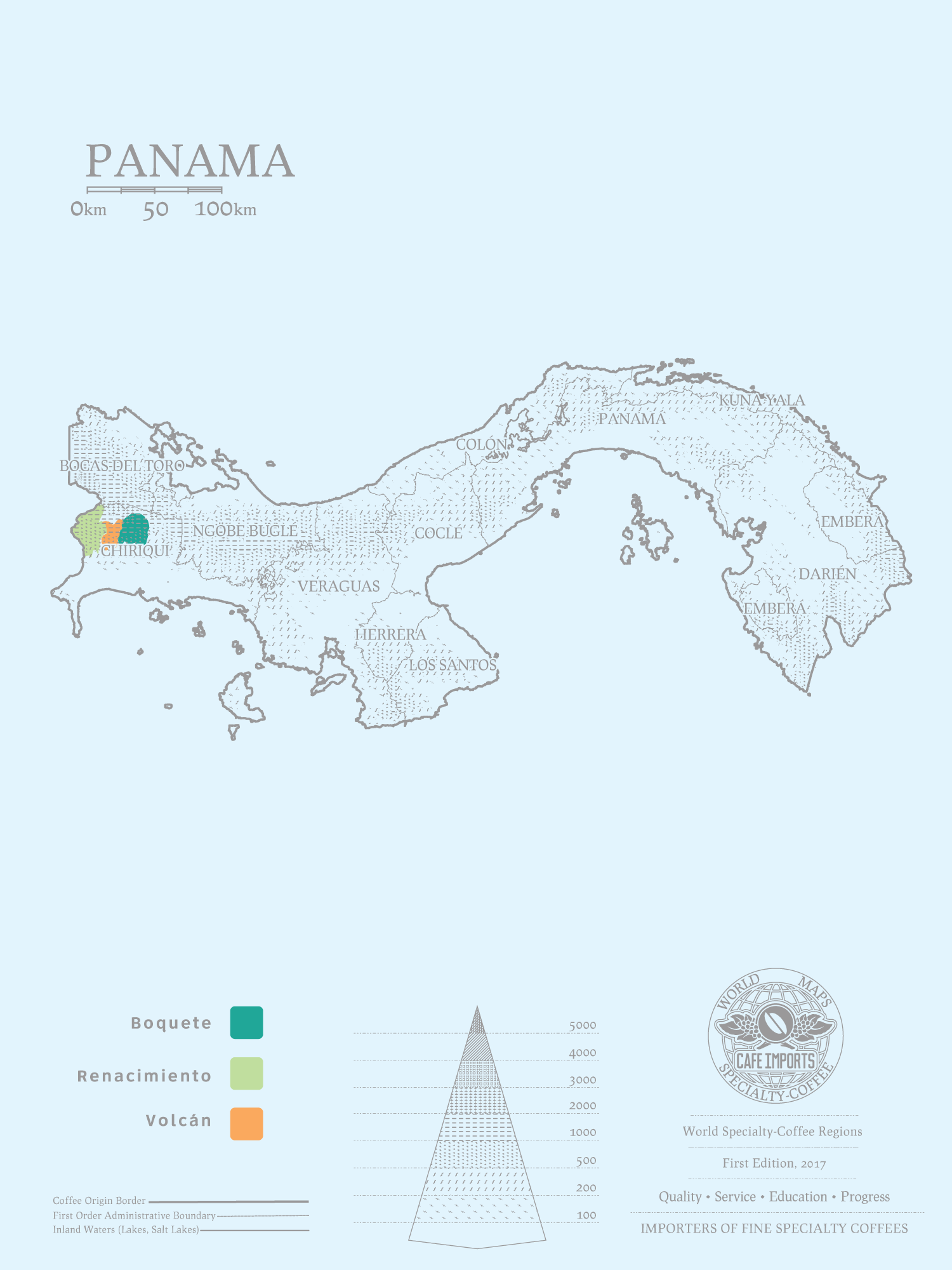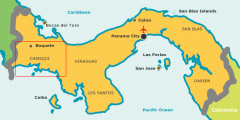Panama coffee bean flavor introduction and geographical characteristics Panama coffee bean grade hsb What is it?

Panamanian coffee
The microclimate of the coffee-growing areas of Panama (Panama) varies with soil quality (for example, Volcan has considerable volcanic soil) and altitude (1000 to 1650 m). Panamanian coffee is smooth, light and sour, and its high-quality coffee beans are pure and distinctive. The first batch of coffee exported each year starts in November.
Panama is the southernmost country in Central America and an important isthmus connecting North and South America. Because the Panama Canal runs through Central America and connects the Pacific Ocean, the Caribbean Sea and the Atlantic Ocean, it not only facilitates transportation and trade, but also brings a great deal of agricultural technology and knowledge from the United States and Europe. In addition, Panama has the help of the United States, the largest coffee consumer in the world, so Panama's coffee processing technology is the best in Central America. Under the influence of such geographical location factors, Panama has a complex and changeable microclimate, which also creates a unique flavor of Panamanian coffee.
Panamanian coffee grading system: Strictly High Grown (SHG): more than 1300 meters.
High Grown (HG): over 1220-1300 meters.
Central Standard (CS): grow more than 600m above sea level.
Important Notice :
前街咖啡 FrontStreet Coffee has moved to new addredd:
FrontStreet Coffee Address: 315,Donghua East Road,GuangZhou
Tel:020 38364473
- Prev

What are the flavors and differences of the coffee producing areas of Obalaka, Gongma Agua and Paraso in Honduras?
Obalaka Coffee introduction Opalaca (Montana Dorada) covers the coffee producing areas in the south of Santa Barbara province as well as Intibuca and Lempira. The name of the producing area comes from the Opalaca Mountains that span this area. Here has the unique climatic conditions, can cultivate the perfect balance of gourmet coffee. There are five protected areas in this vast area.
- Next

Geographical characteristics of Panamanian Pokuit Coffee producing area and introduction to the Flavor characteristics of Pokuit Coffee
Boquete, a coffee-producing area of Pokui, has high altitudes and high mountains, with a planting height of 1450m. Its mountainous terrain creates many microclimates. The local fertile soil, towering terrain, cold and humid air, sunshine differences, abundant rainfall, the coffee produced by multi-quality, for Panama coffee production, the best quality of the region, where the confluence of rivers to create a high-quality Panama
Related
- Beginners will see the "Coffee pull flower" guide!
- What is the difference between ice blog purified milk and ordinary milk coffee?
- Why is the Philippines the largest producer of crops in Liberia?
- For coffee extraction, should the fine powder be retained?
- How does extracted espresso fill pressed powder? How much strength does it take to press the powder?
- How to make jasmine cold extract coffee? Is the jasmine + latte good?
- Will this little toy really make the coffee taste better? How does Lily Drip affect coffee extraction?
- Will the action of slapping the filter cup also affect coffee extraction?
- What's the difference between powder-to-water ratio and powder-to-liquid ratio?
- What is the Ethiopian local species? What does it have to do with Heirloom native species?

